#ETH Zurich
Text
Sensors that monitor infrastructure, such as bridges or buildings, or are used in medical devices, such as prostheses for the deaf, require a constant supply of power. The energy for this usually comes from batteries, which are replaced as soon as they are empty. This creates a huge waste problem. An EU study forecasts that in 2025, 78 million batteries will end up in the rubbish every day.
A new type of mechanical sensor, developed by researchers led by Marc Serra-Garcia and ETH geophysics professor Johan Robertsson, could now provide a remedy. Its creators have already applied for a patent for their invention and have now presented the principle in the journal Advanced Functional Materials.
Read more.
15 notes
·
View notes
Text
by ETH Zurich
"3D printing is advancing rapidly, and the range of materials that can be used has expanded considerably. While the technology was previously limited to fast-curing plastics, it has now been made suitable for slow-curing plastics as well. These have decisive advantages as they have enhanced elastic properties and are more durable and robust."
"The use of such polymers is made possible by a new technology developed by researchers at ETH Zurich and a US start-up. As a result, researchers can now 3D print complex, more durable robots from a variety of high-quality materials in one go. This new technology also makes it easy to combine soft, elastic, and rigid materials. The researchers can also use it to create delicate structures and parts with cavities as desired."
"Inkbit, an MIT spin-off, was responsible for developing the new printing technology. The ETH Zurich researchers developed several robotic applications and helped optimize the printing technology for use with slow-curing polymers."
18 notes
·
View notes
Text

march 2021
61 notes
·
View notes
Photo

The chaotic early phase of the solar system!
Before the Earth and other planets formed, the young sun was still surrounded by cosmic gas and dust. Over the millennia, rock fragments of various sizes formed from the dust. Many of these became building blocks for the later planets. Others did not become part of a planet and still orbit the sun today, for example as asteroids in the asteroid belt.
Researchers from ETH Zurich and the National Centre of Competence in Research (NCCR) PlanetS, in collaboration with an international team, analysed iron samples from the cores of such asteroids that landed on Earth as meteorites. In doing so, they unravelled part of their early history during the time when planets formed. Their findings were published in the journal Nature Astronomy.
Image: Tobias Stierli, flaeck / PlanetS
#art#cgiart#chaos#solar#erath#planet#cosmos#cosmic#universe#dust#ETH zurich#NCCR#asteroid#iron#blast#orbit#tobias stierli#flaeck#planetS#wallpaper
11 notes
·
View notes
Text
youtube
These scientists have created eco-friendly jet fuel from CO2, sunlight, and water💧☀️
#Earth #Environment #ClimateCrisis #NowThis
#now this earth#now this#Solarpunk#fuel#jet fuel#eth zurich#co2#sunlight#water#Aldo Steinfeld#Youtube
3 notes
·
View notes
Text
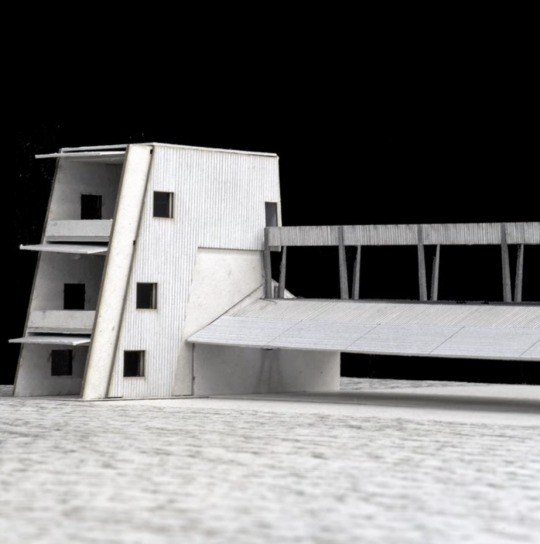

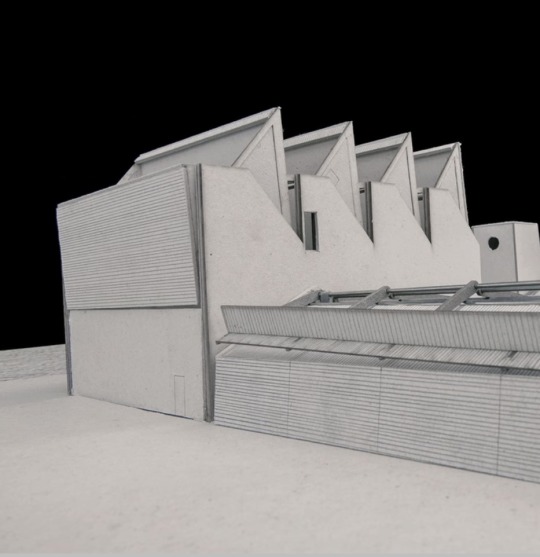
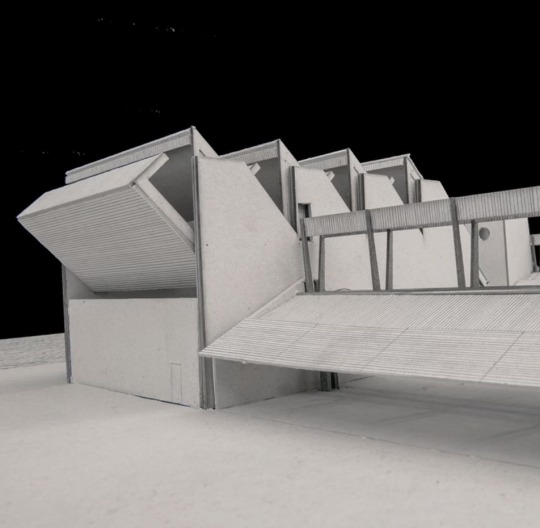
‘Frequest Flyers’, Christian Weber & Tim Kappeler with ETH Zürich, 2019
Via studioalexanderlehnerer on Instagram
#eth zurich#architecture#christian weber#tim kappeler#architectural#architectural model#miniature#eth#contemporary architecture#switzerland#svizzera#schweiz#architettura#baukunst
3 notes
·
View notes
Text
Strengthening Swiss hydropower with science - Technology Org
New Post has been published on https://thedigitalinsider.com/strengthening-swiss-hydropower-with-science-technology-org/
Strengthening Swiss hydropower with science - Technology Org
Researchers at ETH Zurich, led by Robert Boes, are developing specific solutions to optimise electricity production from Swiss hydropower plants. This will ensure that hydropower remains the backbone of Switzerland’s electricity supply in the future.
“Although Swiss hydropower is a proven technology, we must constantly work on optimising it. If we don’t, electricity production and storage at existing plants will slowly erode,” explains Robert Boes, who has headed the Laboratory of Hydraulics, Hydrology, and Glaciology at ETH Zurich since 2009. This is because reservoirs, in particular, have a natural tendency to shrink due to rubble and gravel. Sediment in the waterways inevitably leads to wear and tear on the turbines over time.
ETH Zurich researchers have spent several years tackling these and other challenges: they have developed solutions for efficient water management, calculated maintenance strategies for turbines, and shown which locations have the potential for making the most effective and eco-friendly use of hydropower. This is how they are ensuring that hydropower remains the backbone of Switzerland’s electricity supply in the future – especially in winter, when photovoltaic systems generate less power.
Better water management for run-of-river power plants
There are 11 run-of-river power plants along the 36 kilometres that the River Limmat flows from Lake Zurich until it meets the River Aare. Lake Zurich resembles a large head reservoir through which water is drained into the Limmat. The authorities use the weir system at Zurich’s Platzspitz park to regulate the level of Lake Zurich and thus also how much water flows into the river. Besides playing a role in flood protection, navigation and ecology, this water level is particularly relevant for electricity production.
Boes and his research team recently showed in a study that optimised weir regulation at Platzspitz could allow around 2 percent more electricity to be generated in the power plants along the Limmat. This increase in efficiency would arise from a new management strategy that, first, permits lake water levels to be higher under today’s regulations and, second, uses weather models to better adjust water level regulation in Lake Zurich to expected precipitation and inflow volumes.
Zurich’s Platzspitz weir at the confluence of the Limmat and Sihl rivers. Image credit: Canton of Zurich
As a general rule, the more evenly the water flows into run-of-river power plants, the more electricity they can produce. Especially in the case of small and medium levels of high water, the new regulations would make better use of the additional water present. “If the weather model predicts heavy rain, the smart weir system would release a little more water into the Limmat ahead of time. Then, when the predicted rain arrives, the lake would have more of a buffer and could continue to release water evenly into the Limmat despite the heavy rainfall,” Boes explains. This would prevent the turbines from being overloaded by too much water. Of course, water managers would still have to comply with high-water regulations as well as ecological and other requirements.
Similar adaptations would also be possible on other rivers on the Swiss Plateau downstream of Alpine lakes. Boes and his team have calculated that electricity production from run-of-river power plants could be increased by around 100 gigawatt hours per year if weir systems were managed more intelligently. This would be enough to meet the annual electricity needs of around 25,000 four-person households.
Protecting turbines more effectively against sediment
The fine silt that rivers carry is the natural enemy of every hydropower turbine. It acts like sandpaper, causing turbines to wear out over time and generate significantly less electricity. Although this problem has been known for a long time, it has still not been fully resolved. While many power plants feature what are known as sand traps, these often fail to remove enough of the tiny particles from the water.
To increase the sand traps’ effectiveness, and thus protect the turbines and avoid production losses, Boes and his team investigated which types of trap are particularly effective: “Long traps with a gentle bottom gradient, which make the water flow as slowly as possible, work best. They let the particles settle more easily to the floor,” Boes says. These findings have already been used to improve the sand trap at the Susasca hydropower plant in Graubünden. However, longer traps also require more building materials and take up more space, making them expensive. As a result, decisions on which structural adaptations make economic and technical sense will differ from power plant to power plant.
Boulder bypasses for reservoirs
Weather-related erosion causes stones, gravel and other sediments to enter reservoirs via their water intake and reduce their storage volume. This problem, known as sedimentation, could reduce the storage capacity of Swiss reservoirs by around 7 percent by 2050. Today, small and medium-sized reservoirs use bypass tunnels as a structural measure against sedimentation. These tunnels guide stones, gravel and silt past the dam wall during floods. However, since floodwaters carry a great deal of sediment, the floor of the bypass tunnel is sometimes subject to pronounced wear.
Boes and his team have repeatedly investigated this problem in recent years. For example, the researchers investigated which materials are best suited to lining the floor of such tunnels. After countless tests, they concluded that high-strength granite is best able to withstand heavy wear and tear in particularly harsh conditions. Based on this realisation, several bypass tunnels worldwide have since been lined with granite.
The bypass tunnel at the Pfaffensprung reservoir in the canton of Uri has already been lined with granite. Image credit: ETH Zurich
Using the Solis reservoir in Graubünden as an example, the researchers were also able to prove how effective bypass tunnels actually are. The tunnel has reduced annual sedimentation in Solis by over 80 percent. However, this requires adjustments to storage management: the power plant’s operators can further increase the tunnel’s effectiveness by bringing the water level in the reservoir down low enough, as this enables the inflowing river to transport particularly large quantities of rock and sediment and discharge them via the tunnel. These findings are also relevant for the operators of numerous other power plants.
More electricity through optimised turbine maintenance
Another way to deal with the buildup of silt in reservoirs is to channel fine sediments into downstream sections of the river via the headrace and turbines. “The problem with this is that it causes more turbine wear. But it can still be a worthwhile measure for Alpine reservoirs if alternative measures, such as bypass tunnels, would be too expensive or not feasible,” Boes says.
However, to better assess the feasibility of this approach to the problem of sedimentation, power plant operators need to know what damage the silt causes to the turbines and how much it reduces their efficiency. Boes and his team analysed this problem in one hydropower plant in Valais and another in Graubünden. The researchers used their findings to develop a model that predicts when a turbine will lose output due to sediment wear and ought to be replaced. This enables power plant operators to optimise the maintenance of their systems and ultimately produce more electricity.
The potential of Swiss hydropower
In addition to these specific solutions for existing hydropower plants, Boes and his team at ETH Zurich have also been conducting in-depth research in recent years into the potential for expanding Swiss hydropower. For example, his research group have investigated which areas of glacial retreat would be most suitable for new reservoirs and which existing dams might be raised to create more storage volume.
In 2020, the Swiss Federal Office of Energy used the results of these ETH studies on suitable sites as the basis for a roundtable discussion at which electricity companies, environmental protection organisations and cantons agreed on a list of 15 hydropower plant expansion and new construction projects. Acting as facilitator between the parties, ETH Professor Emeritus Michael Ambühl also played a part in helping the parties reach a compromise. These projects were subsequently incorporated into a new Electricity Supply Act. Whether this legislation comes into force ultimately depends on the Swiss electorate, which will vote in June on expanding hydropower and other renewable energy sources.
Source: ETH Zurich
You can offer your link to a page which is relevant to the topic of this post.
#000#approach#Building#channel#Companies#confluence#construction#course#deal#Ecology#economic#efficiency#electricity#energy#Energy & fuel news#energy sources#Environmental#ETH Zurich#federal#floods#Fundamental physics news#Future#how#hydropower#hydropower plants#it#Lakes#LED#Legislation#LESS
0 notes
Text
Самое высокое в мире здание, напечатанное на 3D-принтере, готовят к сборке в отдаленной швейцарской деревне. Белая башня Tor Alva, созданная исследователями из ETH Zurich, будет состоять из более чем сотни колонн, а наверху появится пространство для выступлений.
1 note
·
View note
Text
amazing resource for building plans....BUILDING ON THE SHOULDERS OF GIANTS. search by projects, or by design (sketch an outline and get corresponding project examples).


0 notes
Text
The cause of Guillain-Barré syndrome elucidated
Guillain-Barré syndrome is a rare disease in which the immune system attacks the peripheral nerves. Those affected suffer from muscle weakness and paralysis. A research team led by ETH Zurich has now elucidated the mechanism of this autoimmune reaction.
Patients with Guillain-Barré syndrome (GBS) suffer from a rare and diverse disorder of the peripheral nervous system. The disease is often…

View On WordPress
0 notes
Text

ETH Zurich Summer Internship for international students.
ETH summer internship is a Fully-funded summer research fellowship provides monthly stipend, free housing, and other benefits to admitted students.
for more info: Summer Internship for international students.
#scholarships#international students#internship#zurich#eth#eth zurich#education#study abroad#study academia#study advice#study in switzerland#studyblr#uniblr#stem academia#germany#on my desk#study notes#studying#student#uuuuuugh#mine
0 notes
Text
Hot water tanks, washing machines, kettles: limescale forms in every domestic appliance that comes into contact with (hot) water -- especially in areas where the water is hard, meaning high in calcium. Often the only thing that helps is to use vinegar or a special descaler to dissolve the rock-hard deposits and restore the appliance's functionality.
This is a nuisance in households -- and an expensive problem in thermal power stations, for example those that generate electricity, where the formation of limescale is known as fouling. Heat exchangers are particularly prone to limescale, which greatly reduces the efficiency of the systems: a layer of limescale just one millimetre thick in the heat exchanger's pipes reduces the efficiency of electricity production by approximately 1.5 percent. To compensate for these losses an additional 8.7 million tonnes of hard coal would have to be burned. That's bad for the carbon footprint and the climate, and it's expensive for the electricity producers.
Read more.
10 notes
·
View notes
Photo

ETH Zurich creates dramatically contoured concrete slab ceiling
The HiRes Concrete Slab was made by casting concrete in situ in a 3D-printed mould. Photo by Andrei Jipa

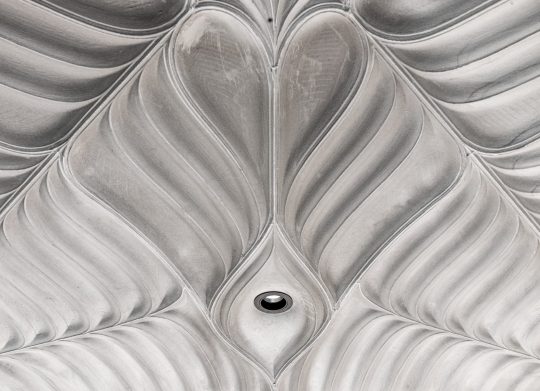
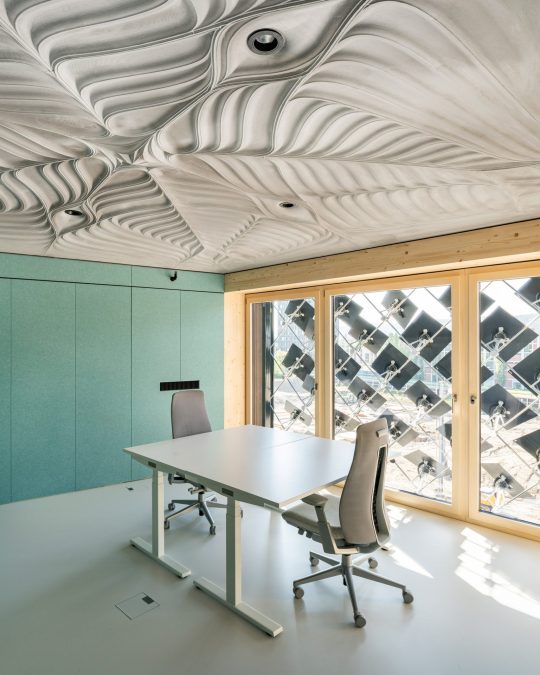
#eth zurich#artist#art#contoured slab ceiling#hires concrete slab#art installation#concrete#3d-printed mould#andrei jipa#photographer#architecture
1 note
·
View note
Text

april 2022
6 notes
·
View notes
Text
#eth#ethereum#merge#bitcoin#kripto haber#kriptohaber#finance#binance#nft#crypto#altın#eth zurich#eth news#eth price#eth fork#bitcoin latest news#eth 2.0#btc
0 notes
Text
@Anyone who's a student at ETH Zurich, I would really like to access the content of a specific course there
#eth zurich#if someone can help me out id be really grateful#its kinda important#please boost if you see this#i want the course on stress testing of banks by markus mocha to be specific#zurich
0 notes